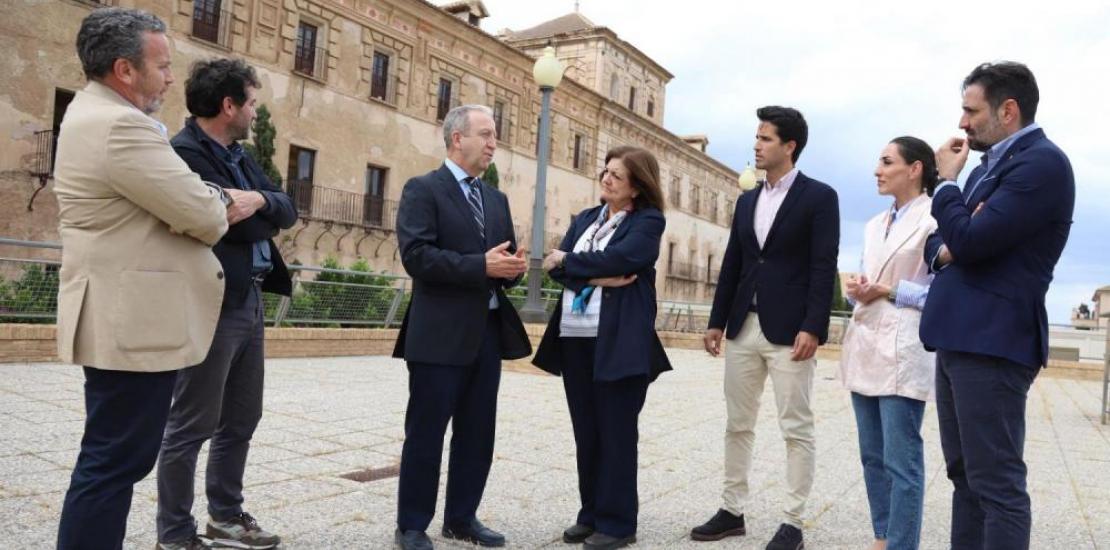UCAM will complete the restoration of the Los Jerónimos Monastery with the restoration of two façades
The university institution will allocate one million euros to these works, which will begin at the same time as the restoration of the cloister, to which it has allocated a similar investment. The Directorate General for Cultural Heritage has authorised the work and granted contribution of seventy thousand euros.
The UCAM Murcia Campus, located in the capital of the Region, considered by various international publications as ‘one of the most beautiful universities in the world’, thanks to its central building, the Los Jerónimos Monasterio, a historical and artistic monument from the 18th century, will soon shine even more brightly. Just as the restoration work on the cloister is about to be completed, recovering all its original design and decoration, the San Antonio University Foundation will begin the complete restoration of the two remaining elements, the northeast and southeast façades of the monastery, so that the historic complex will once again display all its beauty and remain faithful to its original design and creation.
The UCAM President, María Dolores García, and the Director General of Cultural Heritage of the Region of Murcia, Patricio Sánchez, visited the building accompanied by the architect in charge of the works, Juan de Dios de la Hoz, with whom they discussed the details of the work. This represents a new milestone in what is one of the main references of Baroque in Murcia, declared an Asset of Cultural Interest. They were accompanied by Gregorio Romero, head of the Community's Historical Heritage Service, and several members of the Board of Trustees of the San Antonio Foundation.
The investment for this intervention amounts to 1,082,550 euros and will be carried out over 15 months, based on an in-depth historical and architectural study of the building. For the structural consolidation and aesthetic recovery of both façades, specialised interventions will be carried out, such as the restoration of the decorative technique of false ashlars, water-repellent treatments and lime-based pigmentations, renovation of window frames with high-security glass, repair of balcony floors and metal grilles. In addition, an archaeological intervention will be carried out on the sculptures of Saint Jerome and the coats of arms on the towers. Also, the main access to the northeast façade will be adapted to improve its accessibility without compromising its heritage value.
The Directorate General for Cultural Heritage of the Region of Murcia has granted authorisation for the execution of the works and a subsidy of 70,000 euros. During the visit, the director of the department, Patricio Sánchez, pointed out that ‘the care and attention that the university puts into improving our heritage means that the Region of Murcia can continue to enjoy a wonderful setting in the best possible conditions’. He also recalled that the incentive they provide ‘is a commitment by the Regional Government to recover the heritage of the Region of Murcia, with a call for applications in which ten were lucky enough to be eligible for this aid.’
This project once again demonstrates UCAM's commitment to the protection of cultural and artistic heritage, and the University's president pointed out that ‘we are very excited because we are finally going to undertake the restoration of the façade, an intervention that will make a valuable contribution to all the people of Murcia, who will be able to enjoy the renewed image of our 'Escorial murciano', as we affectionately call it.’
‘All the work to be carried out in the restoration and enhancement of these two façades has been designed using traditional techniques and sustainable materials, such as lime and wood,’ said Juan de Dios de la Hoz, ‘which also come from natural environments in order to reduce the environmental footprint and ensure the long-term conservation of the monument’.
In addition, further improvement and maintenance work is planned for the monumental complex.




